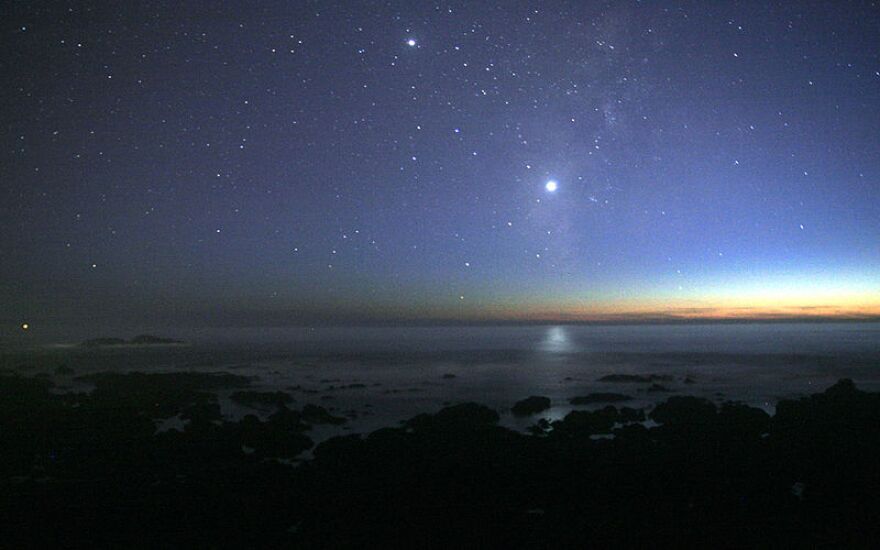Venus has been a prominent bright object in the southwestern skies just after sunset for the past few weeks.
Venus is the third brightest night time object after the Sun and Moon.
Over the next few months Venus, although a planet, is a bright evening “star” as it orbits the Sun. It will rise higher in the western sky in the constellation Aquarius where it will encounter the fainter planet Neptune on the evenings of Jan. 26 and 27 .
Neptune is too faint to be seen with the naked eye but you can use Venus to spot Neptune with a good pair of binoculars. On the 26th, Neptune lies about a degree above Venus. Neptune appears as a magnitude 7.9.
On Jan. 27 Neptune is just 5’ north of Venus the closest the two have been since 1984. In reality Venus lies 104 million miles from earth while Neptune is a distant 2.85 billion miles away. Neptune is really 4 times larger than Venus, but because it so much farther away Venus appears almost 7 times larger in a low power telescope.
The moon adds to the beauty of this conjunction as it appears 7 degrees below the two planets.
This is also a good time to try to see the elusive planet Mercury near the western horizon after Jan. 25. Your chances of spotting Mercury improve as the month progresses as it gains altitude as it orbits the Sun.
This time of year, the nights are cold despite the fact the Sun is closer to the Earth but it's also a time when the skies are clear and brings us out to view the skies even for a short period of time. So take this opportunity to view these three celestial objects in the evening skies.







